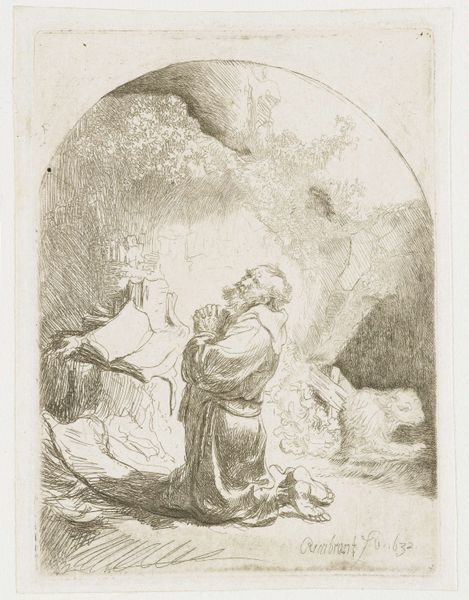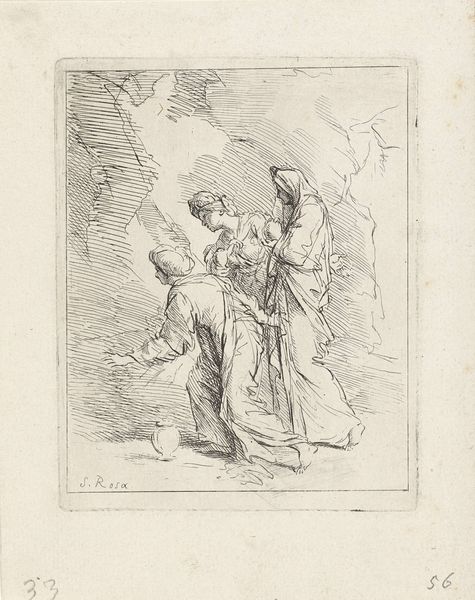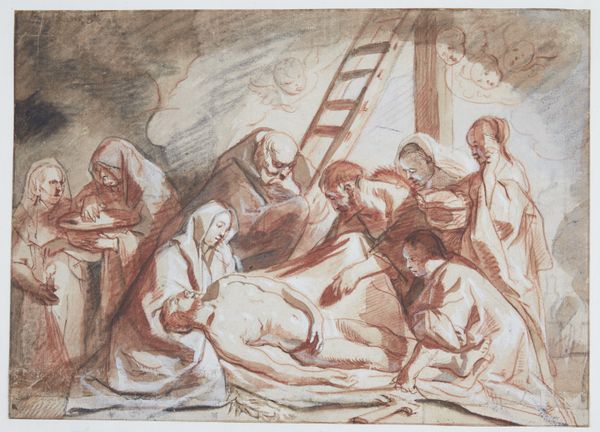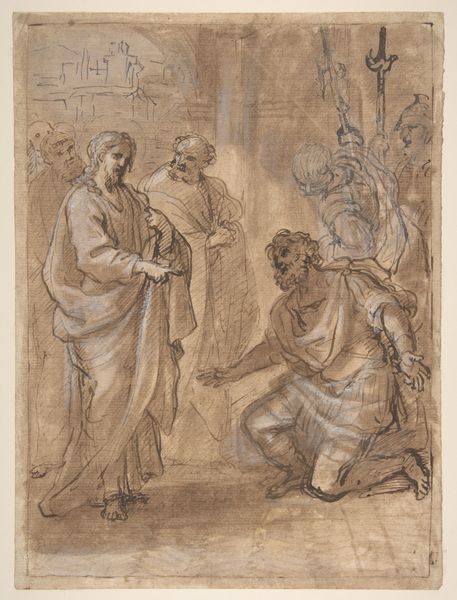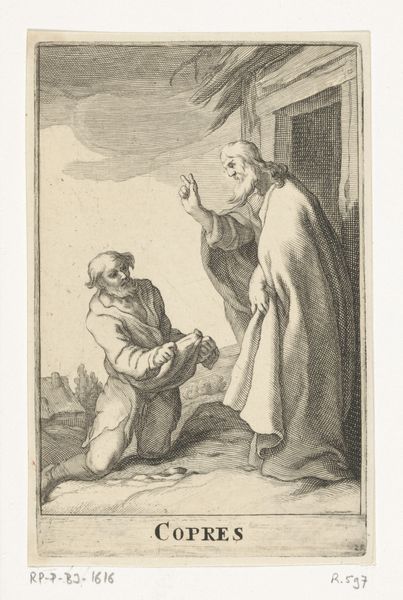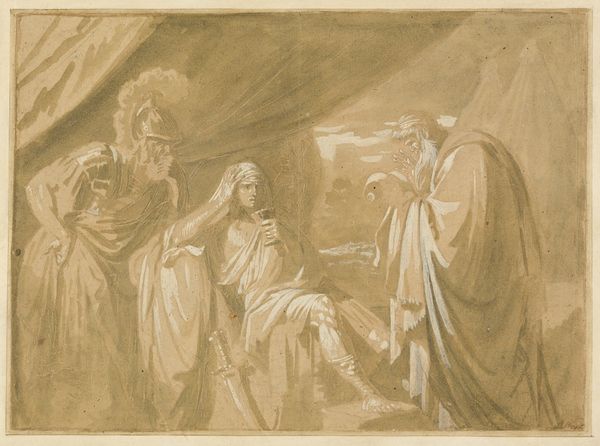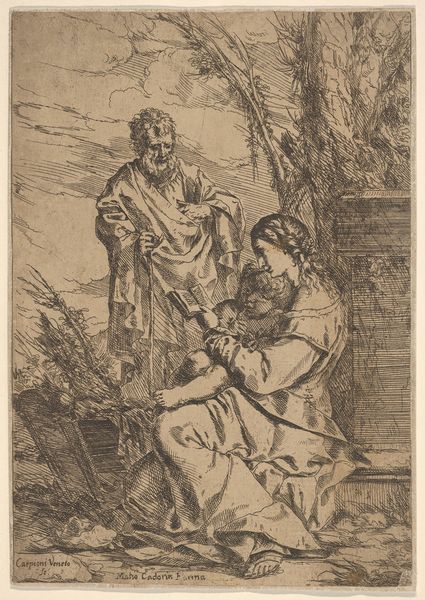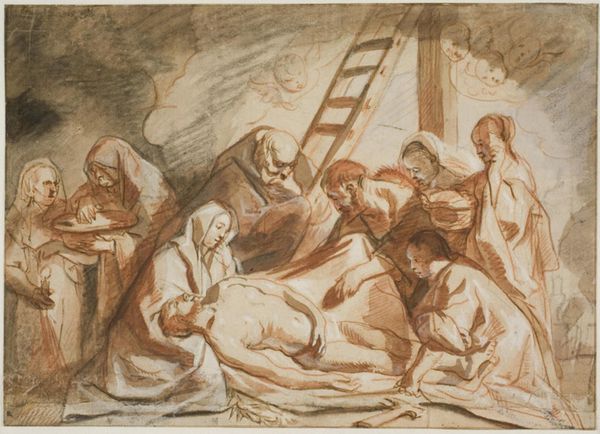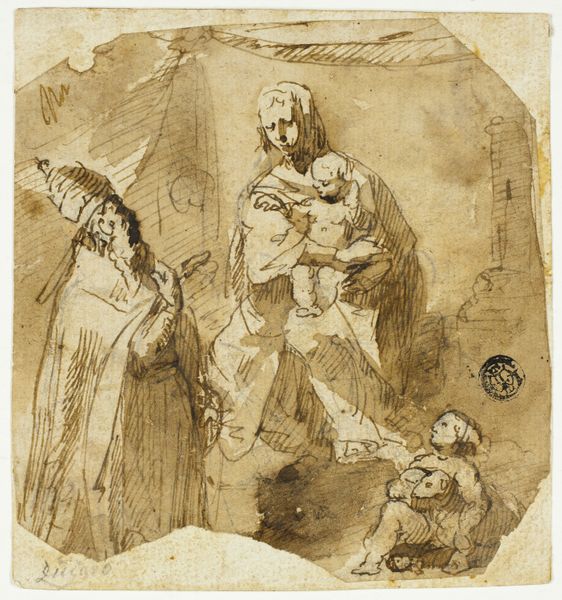
Noah mit seinen Angehörigen vor dem Opferaltar kniend 1784
0:00
0:00
Copyright: Public Domain
Curator: Before us is Friedrich Wilhelm Schäfer's "Noah mit seinen Angehörigen vor dem Opferaltar kniend," dating to 1784. The work, rendered in ink, depicts Noah and his family kneeling before an altar. Editor: The monochrome tones immediately strike me. There is something about the stark shading that creates a mood both reverent and melancholic, emphasizing the fragility of life after the deluge. Curator: Observe how Schäfer employs dramatic chiaroscuro. The stark contrasts illuminate the figures, drawing our eyes to their gestures and expressions. It's a masterclass in conveying depth and volume through minimal tonal variation. Editor: Absolutely, but I also can’t ignore the implications. These survivors, huddled around a sacrifice, represent more than a family—they signify the dawn of a new world order after climate catastrophe. Their solemn expressions carry the weight of inherited trauma. What choices led them to the water? And how will they change moving forward? Curator: The composition certainly guides our reading. Notice how Schäfer arranges the figures around the altar. The symmetry grounds the image, providing a stable center, around which emotional chaos softly and respectfully gathers. The flame, depicted so boldly in an otherwise minimalist palette, creates a pivotal focal point, doesn’t it? Editor: I agree. And think of what that focal point represents in 2024: repentance, regeneration, but also continued hubris, sacrifice, and exploitation in the name of renewal, of cleaning our slates and doing harm again. Curator: Perhaps we can appreciate the power of form here, independent of specific narratives or external ideologies. What Schäfer achieves through line, shading, and composition allows this drawing to resonate regardless of one’s socio-political frame. Editor: The formal aspects certainly amplify its affect, but the piece remains inescapably linked to contemporary dialogues about environmental change. How can it not? Thank you, Herr Schäfer. I guess it never ends. Curator: Indeed. Seeing his strategic and powerful application of minimal aesthetic devices allowed me to re-imagine it yet again today.
Comments
No comments
Be the first to comment and join the conversation on the ultimate creative platform.
